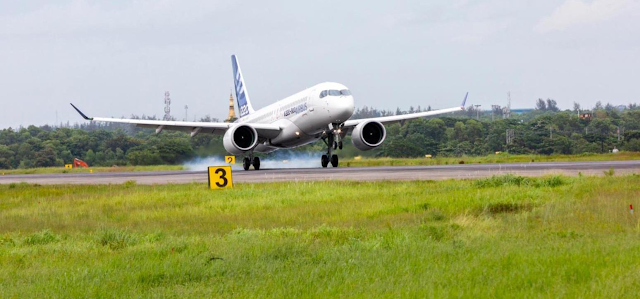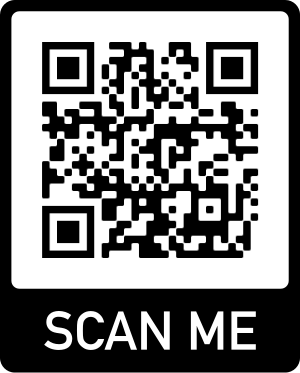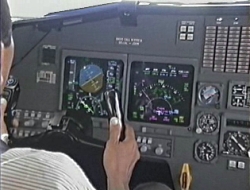INVESTIGATION
MUST REPORT IF THE ACCIDENT WAS A LANDING ACCIDENT OR A FLARE ACCIDENT
Mastering the Landing Flare/Round out
Pilot Perception
Analysis of 6,676
aircraft accident reports published by the National Transportation Safety Board
134 pilots with varying experience levels
Sources:
- THE INTERNATIONAL JOURNAL OF AVIATION PSYCHOLOGY, 12(2), 137–152
- Oklahoma State University
- Department of Psychology
- Laboratory of Comparative and Behavioral Biology
Danny Benbassat and Charles I. Abramson
- Razia Rashid - founder of Psychology To Safety
- ATSB RESEARCH AND ANALYSIS REPORT
- Aviation Safety Research Grant – B2005/0119
Aerial
perspective is a monocular cue which is used for depth
perception [the atmosphere causes distant
objects to look hazy or blurry], which is used to judge how far away
objects are. Monocular cues are named because they can occur
only using one eye (as opposed to binocular cues which only occur with the use
of both eyes).
Critical
perceived time
to contact (TTC)
Time remaining until the aircraft’s wheels make contact with the
runway if no further action is taken (Mulder et al 2000).
TTC must be estimated directly, without first estimating speed and distance,
based on the following ratio (known as tau):
TTC ≈ θ/(dθ/dt)
Where θ is the visual angle between the aimpoint and any other point
on the ground plane at time one (see Figure above); and dθ/dt is the rate of change of this angle over time
(Hoyle F 1957; Kaiser & Mowafy 1993; Lee, DN 1976).
Tau is a monocular cue to time-to-contact.
During a landing, tau can be defined as the ratio of the angular distance between
any two points on the ground (which happen to lie along the aiming line)
divided by how fast this angular distance is increasing. Several other versions
of tau have been proposed (see Regan & Gray 2000).
In more recent aviation research, Mulder and colleagues (2000) found
mixed support for the proposals that flare timing is based on perceived runway
angle (ψ) and perceived TTC (based on tau).
Study
The effects of pilot’s critical flare operation on long
and hard landing events based on real flight Quick Access Recorder (QAR) data.
Flare
accident rates
Causes
for improper flares
The flare is the transition from a controlled descent to actual
contact with the landing surface (Federal Aviation Administration [FAA], 1999;
Grosz et al., 1995) and is also known as the flare out, round out, or level off (Jeppesen, 1985).
The task of determining the aircraft altitude above ground is crucial
to a successful flare (Green, Muir, James, Gradwell, & Green, 1996) and is
accomplished by the use of vision more than any other sense (FAA, 1999;
Jeppesen, 1985; Menon, 1996; Nagel, 1988; Thom, 1992).
Depth Perception
Depth perception deals with the ability to see the environment in
three dimensions and estimate distances of objects from us and from each other.
Aerial Perspective, objects
at larger distances from us are affected by natural scattering of light and
form less of a contrast with their background; making it harder to gauge a
distance between the two and us.
Monocular
cues operate when a person is looking with only one eye
Pilots rely on monocular depth perception cues
rather than binocular depth perception cues (Benson, 1999; Bond, Bryan, Rigney,
& Warren, 1962; Langewiesche, 1972; Nagel, 1988).
Monocular
depth perception is learned or dependent on experience
(Benson, 1999; Bramson, 1982; Langewiesche, 1972; Love, 1995; Marieb, 1995;
Tredici, 1996).
-
It is used by artists to induce depth in their two
dimensional paintings. Thus, they are also called as the pictorial cues.
The monocular cues that help us in judging the depth and distance in
two-dimensional surfaces:
·
Linear perspective: Imagine
you are standing between the rail tracks and looking in the distance. You would
see that the rail track become smaller and smaller, until there is a point
where they meet each other. Linear perspective reflects this phenomena. It says
that the distant between two objects far away appear to be smaller than what
the distance actually is.
·
Interposition or overlapping: This
monocular cue occurs when one object covers the other. The object that is
completely visible seems to be nearer and the object that is partially visible
seems to be farther away.
·
Clearness: The more
clear the object the nearer it seems. For example, on a hazy day a distant
mountain would appear far away than on a clear day, because haze blurs the fine
details. Therefore, if we see details of an object we perceive it closer.
·
Relative height: We perceive
large objects to be closer to us and smaller objects to be farther away.
·
Motion parallax/ Movement: This cue
occurs when the objects are in motion. The distant object appears to move
slowly than the objects that are close.
Binocular
cues operate when both our eyes are working together
Binocular
depth perception is innate or acquired very early in life (Fox, Aslin, Shea,
& Dumais, 1980; Kalat, 1998; Reading, 1983; Reinecke & Simons, 1974).
The cues that are provided by both the eyes working together:
·
Retinal or binocular disparity: Humans
have two eyes which are horizontally separated by a distance of 6.5
centimeters. Because of this distance between two eyes the images formed on
retina of a same object is slightly different. This difference in the images of
two eyes is retinal disparity.
·
Convergence: when we
see a closer object our eyes turn inward or converge, so that the image is
formed on the fovea. Some muscles in our eyes send
signal to the brain regarding the degree of convergence and our brain
interprets it as a cue for depth perception. The more your eyes turn inward or
converge the nearer the objects appear in the space.
·
Accommodation: The
process by which ciliary muscles change the
focal length of the eyes so that the image is clearly formed on the retina is
called the accommodation of the eye. The accommodation varies for near and
distant objects and also for objects moving away or towards the eye.
Failure to accurately determine aircraft altitude may result in flaring the aircraft too high (Gleim, 1998; King, 1999; Quinlan, 1999) or too low above the runway (Christy, 1991; Kershner, 1981; Love, 1995).
Improper flares also increase brake, nosewheel tire, and nosewheel
shimmy dampener wear (on Cessnas; Christy, 1991; Jorgensen & Schley, 1990).
Improper flares may affect pilot self-esteem and selfefficacy.
The flare maneuver was defined as the ability to determine 10 to 20
ft from the ground and initiate the leveloff.
Three groups of pilots (novice, intermediate, and expert) were
surveyed with purposive sampling.
Participants were 134 pilots (novice = 55, intermediate = 45, expert
= 34) from three Part 141-approved flight schools in the state of Oklahoma.
Pilot
perceptions were assessed with a 21-item questionnaire.
Pilots were asked to rate the flare maneuver and nine other randomly
selected standard flight maneuvers for the level of difficulty on a scale
ranging from 1 (extremely easy) to 7 (extremely difficult) under optimal
conditions (i.e., no wind, 10 miles visibility).
After rating the 10 items,
pilots turned the page and learned that the study was specific to the landing
flare.
In Item 11
Pilots were provided with the number of total annual U.S. landing
accidents and were asked to estimate the number of annual flare accident
frequencies.
In Item 12
Pilots were asked to indicate how confident they were in their
estimates of annual flare accident frequencies on a scale ranging from 1 (low
confident) to 7 (high confidence).
The next items were not only specific to the landing flare but also
to their ability to determine when to initiate the flare, that is, estimate 10
to 20 ft from the ground.
In Item 13
Pilots imagined that they were transitioning from descent attitude to
flare attitude and indicated how confident they were that their aircraft was 10
to 20 ft from the ground on a scale ranging from 1 (low confidence) to 7 (high
confidence).
In Item 14
Pilots recalled their first solo flare attempts and rated factors
that assisted them in determining the aircraft altitude before initiating the
flare (CFI instruction, instrument readings, practice, pilot manual,
ground-school training, other) on a 7-point-scale ranging from 1 (not at all)
to 7 (to great extent).
In Item 15
After a reminder that pilots flare the aircraft 10 to 20 ft from the
ground, ascertained how pilots rated the task of judging altitude when
initiating the flare on a scale ranging from 1 (very easy) to 7 (very
difficult).
In Item 16
Pilots imagined that they were on approach for landing and were asked
to choose how they determine when to initiate the flare. how did they know they
were 10 to 20 ft from the ground (instrument readings, gut reaction, I don’t,
sense of sight, sense of balance, other).
In Item 17
Pilots were asked to indicate if there was a need for improved
flare-training methods, on a scale ranging from 1 (definitely yes) to 7
(definitely no).
In Item 18
To what factors (pattern practice, natural ability, sheer luck,
aviation books, my instructor, other) did they attribute their current
successful landing flares, on a scale ranging from 1 (not at all) to 7 (to
great extent).
Items 19 and 20 (reiterated
Items 16 and 18)
Required pilots to elaborate and explain their responses. Pilots were
instructed to think carefully before they answered and be as specific as
possible.
In Item 21
Pilots were asked to indicate what type of visual information
assisted them in determining when to initiate the flare.
CONCLUSION
Overall, 6,676 accident
reports produced by the NTSB were analyzed for flare accident rates.
Flare
accidents
Proper flares depend on monocular cues, and monocular cues depend on
experience (Hawkins, 1993; Rinalducci, Patterson, Forren, & Andes, 1985).
On average, the flare only lasts approximately 6 sec and a pilot with
a total time of 5,000 hr only has approximately 8 hr of flare time (King,
1998).
In more recent aviation research, Mulder and colleagues (2000) found mixed support for the proposals that flare timing is based on perceived runway angle (ψ) and perceived TTC (based on tau).
Critical perceived runway angle (ψ)
Pilots could initiate the landing flare when the visual angle (ψ) formed
between the left and right edges of the runway at the aiming line reaches a critical
value (Mulder et al, 2000).
In fact, pilots use different cues or combinations of monocular cues.
For example, overall, the horizon and end of runway, shape of runway or runway
markings, and familiar objects were the most frequent visual cues that pilots
used to estimate their altitude during the flare.
However, University of Oklahoma pilots most frequently used the
horizon or end of runway, whereas Oklahoma State University pilots used the
shape of runway or runway markings.
Softer throttle reduction is helpful for a better flare performance. Not immediately IDLE.
The force of the engines and of gravity are driving the airplane down
and forward. When you rotate the nose up for the flare, some of the energy that
was used to propel the airplane forward is now used to further arrest the force
of gravity. You have less force available for forward motion, your speed
necessarily decreases.
Flare energy
The rotation-to-flare requires energy to arrest downward momentum;
the amount of energy required depends on the glide path angle, any differences
in aircraft speed from target speed, and any acceleration/deceleration. It will
be to your advantage to make the angle and speed differences the same for every
landing.
The rotation-to-flare may or may not bleed airspeed, depending on aircraft flight idle and ground effect characteristics. Here are three examples:
B747 — The combination of a very large wing span induced ground effect perfectly compensates for energy needed to arrest the descent. Once the descent has been arrested, the flight idle and ground effect result in no airspeed loss at all under most conditions. The airplane has to be flown onto the runway, it will not run out of speed and sit itself down.
GV — The GV also has a very large wing span and high flight idle
engines. The descent can be arrested with very little loss of speed, but the
airplane does lose speed gradually if held inches off the runway. But, once
again, it should be flown onto the runway to avoid a long landing.
G450 — The G450 will lose about 5 knots in the rotation to flare,
which is precisely the minimum speed increment to VREF. Once the rotation to
flare is made, speed decay continues as flight idle and ground effect are not
enough to maintain speed. Any exaggerated flare for the sake of touchdown will
result in a significant loss of speed. Once again, the airplane should be flown
onto the runway.
VERY SOFT LANDING
The FLARE curve it has two breaking points: The first, it is on (Xf, Hf) [Glide Slope breaking point] and the second one it is on Xtd flare breaking point [Flare breaking point it is at the touchdown point]. Ideally, from this point on the flare curve must be tangent to runway surface to make a soft landing.
When to flare
What "the book" says:
"Very few manufacturers specify a flare height. Gulfstream, for
example, leaves you off at 50 feet and the next thing you know, you are in the
touchdown zone. Some Bombardier manuals say, "at or below 50 feet."
About the only manufacturer that does print a height is Boeing. In their Boeing
777 Flight Crew Training Manual, they say this: "Initiate the flare when
the main gear is approximately 20 to 30 feet above the runway by increasing
pitch attitude approximately 2° - 3°. This slows the rate of descent."
That pretty much agrees with what we did in the Boeing 747."
You should consult your manufacturer's books.
HINT
Pilot after crossing over threshold at the height 50 ft for landing
MUST NOT LET his/her eye corners to capture any lateral vision, mainly Pilot
Flying, because of lateral vision illusion which induces pilot to see a
relative movement speeding up the plane. That false relative speed up produces
a sensation of runway length it would be shortening very quickly. Runway
excursion.



















